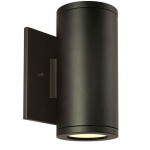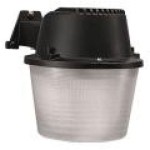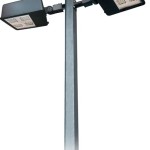What Is the Best Outdoor Wood Finish?
The best outdoor wood finish is not a one-size-fits-all answer. The ideal choice depends on a variety of factors, including the type of wood, the intended use of the project, the desired aesthetic, and the level of maintenance you are willing to undertake. A comprehensive understanding of the different types of wood finishes and their respective strengths and weaknesses is crucial for making an informed decision.
Types of Outdoor Wood Finishes
Outdoor wood finishes are broadly categorized into three main types: stains, paints, and sealers. Each of these categories offers distinct properties and benefits, catering to diverse needs and preferences.
Stains
Stains penetrate the wood surface, altering its color without obscuring the natural grain pattern. They offer a range of finishes from transparent to semi-transparent, allowing the wood's natural beauty to shine through. Stains are typically formulated with oils, resins, or water-based solutions. Oil-based stains provide a durable, long-lasting finish, while water-based stains offer faster drying times and low VOCs (Volatile Organic Compounds).
Paints
Paints provide a solid layer of color, completely covering the wood surface. They are available in various shades and finishes, enabling complete customization. Paints are generally more durable than stains and offer excellent protection against moisture, UV rays, and weathering. However, they hide the wood's natural grain and require more frequent repainting.
Sealers
Sealers are formulated to protect the wood surface from moisture, UV damage, and other environmental factors. They create a protective barrier without altering the wood's natural color. Sealers are available in various finishes, including gloss, semi-gloss, and matte. Common types include polyurethane, epoxy, and varnish. Polyurethane sealers are known for their durability and water resistance, while epoxy sealers offer excellent adhesion and chemical resistance.
Factors to Consider When Choosing an Outdoor Wood Finish
The choice of outdoor wood finish hinges on several factors, each influencing the final outcome and longevity of the project. These factors include the type of wood, the intended use, the desired aesthetic, and the level of maintenance required.
Wood Type
The type of wood significantly impacts the choice of finish. Some woods are naturally more resistant to weathering and decay than others. Softwoods like pine and cedar are susceptible to moisture damage, while hardwoods like oak and teak are more durable. Hardwoods generally require less heavy-duty protection, while softwoods may benefit from a more robust finish.
Intended Use
The specific function of the wood project influences the selection of the finish. For example, a deck that will receive heavy foot traffic might require a more durable stain or paint, while a pergola intended for shade might benefit from a transparent sealer that allows the wood to breathe.
Aesthetic
The desired aesthetic plays a significant role in choosing the finish. Stains allow the natural wood grain to show through, while paints offer a solid color that can be customized to match any style. Sealers are typically transparent, preserving the wood's natural beauty while providing essential protection.
Maintenance
The level of maintenance you are willing to undertake influences the choice of finish. Oil-based stains and paints are generally more durable but require more frequent touch-ups. Water-based stains and paints are easier to apply but may require more frequent reapplications. Sealers often require regular maintenance, depending on the type and the environmental conditions.
Key Points to Remember
When selecting an outdoor wood finish, there are several key points to remember for optimal performance and longevity:
Proper Preparation
Thorough surface preparation is essential for any wood finish to adhere properly and provide lasting protection. This includes cleaning, sanding, and filling any cracks or gaps.
Multiple Coats
Applying multiple thin coats of finish is generally more effective than applying a single thick coat. Thin coats allow the finish to penetrate the wood surface better and create a more durable layer of protection.
Proper Drying Time
Allow sufficient drying time between coats, as specified by the manufacturer. This ensures proper adhesion and prevents cracking or peeling.
Regular Maintenance
Regularly inspect and maintain the finish to ensure its effectiveness. This includes cleaning, sanding, and applying touch-up coats as needed.
By carefully considering the factors mentioned above and following the manufacturer's instructions, you can select the best outdoor wood finish for your project and enjoy its beauty and protection for years to come.

What S The Best Outdoor Finish Wood

When And How Often To Treat Outdoor Wood Finishes Direct

Outdoor Finishes Popular Woodworking

The Best Finishes For Outdoor Wooden Furniture

What Is The Best Paint For Exterior Wood

What Is The Best Finish For Garden Furniture

How To Treat Wood For Outdoor Use 3 Methods Explained

How To Choose The Best Finish For Outdoor Projects

When And How Often To Treat Outdoor Wood Finishes Direct

Wood Oils A No Nonsense Guide Rawlins Paints Blog
Related Posts







